I have this personal quest to find the biggest tree of every native species on the Key Peninsula.
Here, for the first time, is a gallery of some of the trees I have found and measured.
A champion tree is given points according to a formula devised by Maryland’s first state forester in 1925 and used by American Forests since 1940 to crown national champions:
Champion tree points = Height (ft) + Circumference (in) + Average crown spread (ft) / 4
Washington has a strong tradition of finding champion trees, thanks in large part to the tireless efforts of Robert Van Pelt.
I don’t expect the trees on my fledgling Key Peninsula list to attract much interest in the rest of Cascadia—not with the Olympic Peninsula’s superlative trees next door—but to folks in our community, these trees have a direct and immediate power.
I got to see that power on display a few weeks ago at the Longbranch Improvement Club, a big timber-framed CCC-era gathering hall, where, despite the day’s dire forecasts of extreme thunder and giant hail (which never materialized), over 120 people came out for an evening to learn about forest stewardship. The event was organized from the ground up by locals, including me, who have spent the last year imagining and inventing a group called Forest Stewards of the Key Peninsula. The vision is simple: “Forests are seen as key to life on the Key Peninsula—and treated as such.” We want to counteract the mistreatment of our forests by connecting ourselves and our neighbors with the resources, tools, shared labor, and learning we all need.
Anyway, I got to be the evening’s opening act, and before launching into my spiel on forest stewardship and fulfillment, I showed these big trees. Afterward, folks couldn’t stop talking about them. I heard reports of tears.
Living our lives in this place, we are surrounded by evidence of successive waves of logging. Big stumps from the original cut can still be found. Now most of our forests have been cut two or three times. I think we all carry a story in our heads of ecological brokenness. On our properties we face the impacts.
I am often asked, is there any old growth left on the peninsula, or did loggers cut down every last tree? The answer, in short, is that old growth as an ecosystem is long gone. But a scattered handful of old trees have survived all the generations of saws. I have been shown and found a number of them.
And at this point, older second growth has had 150 years to begin to give us a sense of what is possible in our forests.
That to me is the power of our local champion trees. They give us a sense of what is possible. They are a framework for our pride in place, and they are a structure around which we can focus our ecosystem restoration efforts. They are part of an alternative story.
My quest to find big trees has barely begun. A hallmark of life on the KP is that it’s so easy to hide. It’ll probably be a lifelong quest: in my outings as a community naturalist-spy, I will keep my eyes and ears open and my measuring tools handy. Like so much of the rest of my work, it is about revealing what is still here, living alongside us, right in our home place—and in the case of these trees, likely to outlast us by far.
Local readers, if you know of any big trees, let me know.
This big-leaf maple near Longbranch has a scale that is tough to convey. Other maples may end up scoring higher in terms of champion tree points, as old multi-trunked maples can have huge diameters, but I’d be surprised if we have a maple with more mass and volume. It hulks. It is 5’ 5” in diameter, and those branches extend over 60’ from the trunk. Champion tree points: 304.
Yes, that is a small human to make this western redcedar look even bigger. This is a good one because it can be visited any time. It’s in the Penrose Point State Park group campground. I have barely begun measuring big cedars. This tree was my starting point, and in fact it has already been eclipsed by a tree on private property north of Longbranch. Nonetheless, this one measures 140’ in height, 236” in circumference (which equals 6’ 3” in diameter), and 51’ in average crown spread. Points: 389.
The largest trees on the Key Peninsula are Douglas-firs. It is the characteristic tree of our bioregion. I’ve dubbed this individual the Huck Fern Tree, as it has both species of native huckleberry growing out of its deep bark and lush gardens of licorice fern on branches high above. It also stands at Penrose Point State Park, near where a hiking trail crosses the entrance road. A second, slightly smaller old-growth fir sits just behind it. Both have broken-off tops but seem healthy. It is 140’ tall and has a diameter of 7’ 6”. Points: 436.
Here it is. The champion of champions so far. This Douglas-fir near Key Center is the largest tree I’ve yet measured, and it’s just a perfect specimen, pure vigor from roots to crown. When you see it coming through the woods, you’re stopped in your tracks. The trunk is massive, one inch thicker than the Huck Fern Tree. The bark alone is probably ten inches thick. The first limb is seventy feet up. The tree stands 182’ tall, and to cap it off, there is a huge eagle nest in the highest branches. It’s a spectacular tree. Points: 486.
(I wish I had the photography skills to do these trees justice.)
Here is the tree that started me on this crazy champion tree quest. I’ve written about it here. At 110+’ tall, it may be the tallest madrona in Washington, and like the big-leaf maple it has a bulk that is out of all proportion to the rest of the peninsula’s madronas. We do have a lot of madrona here. The species likes to germinate in partial shade and then lean into direct sunlight as it grows, and we’ve got a lot of coastal bluffs where they can do just that. This champion madrona, on the other hand, is in the woods, surrounded by conifers that have the potential to grow much taller than it. Yet it is firmly holding onto its space in the sun. Points: 291.
Here is a rare, rare big tree. Western white pine used to be a significant component of our forests, until nearly all of them were wiped out by white pine blister rust, an exotic pathogen. I wrote about it here. If we can find survivors like this one, which have some level of resistence to the blister rust, we can propagate our own local genetic seed source. White pine is a great tree for reforestation, and it is being planted widely. I would also argue it is our most lovely native tree—but I’m biased. This one is on our property at Hylamuck, along with a number of naturally regenerating white pines that it probably sired. It is 32” in diameter and 140 feet tall. Points: 250.
The biggest Pacific dogwood yet, and just a premier specimen. It's on the edge of a pasture where it captures every mood of light. Like the white pine, this dogwood is on private property. Most of our forest land is privately owned. Seeking these trees has opened my eyes to incredible stories of stewardship and the bonds that can form between people and their land, often over generations. (By the way, champion trees on private land will have their locations kept secret.) This dogwood needs a return visit to properly measure its trunk below all the splits. Points: ???
Pacific yew grows slowly in deep forest shade. Here is our current champion, which was left standing when the surrounding forest was clearcut in the worst way. (I’ve written about this one too.) The flip side of the private property coin is that our forests stand and fall at the whim of the market and how properties get flipped and developed. Yews have become scarce around here. This one is hanging on bravely, despite sun scald giving its needles an orange tinge, and after quite a saga with the land it’s on, the good news is that Great Peninsula Conservancy now owns the land and plans to reforest it. Points: 126
A 145’-tall, 38”-thick Sitka spruce is the biggest I’ve yet measured, though I have a few more I need to visit this spring. “No, you bend out of the way,” it seems to be saying to its Douglas-fir partner. Sitka spruce is a tree I wasn’t sure existed on the Key Peninsula, as we’re a little sunnier than their preferred range toward the coast, but one by one a few have revealed themselves. Points: 274.
What comes next for the Key Peninsula champion tree quest?
Keep finding trees with the assistance of community members. Like I said, I’ve barely begun, and most of these champions will likely be surpassed by as-yet undiscovered trees.
Practice my tree photography and take the time to get a good image of each champion. There are a number of trees currently on the list for which I have no photograph: bitter cherry, Pacific willow, western hemlock, etc.
Document the handful of certified American chestnuts growing on the Key Peninsula—big rare trees planted by pioneers with deep stewardship stories. Expect more reporting on these trees later this year.
At least get a starting-point champion for each species. I don’t know where to begin with red alder, for example, but I should probably just choose a big-ish one as a baseline. For black cottonwood, on the other hand, I’ve got a bead on some big ones and just need to get out and measure them. What about cascara? Hooker’s willow? Should I have a champion vine maple? Why not?
Create a special category for largest glacial erratic boulder. Locals, help me out on this one.
Here’s to more exploration and more big trees ahead. I’d love to hear your thoughts.
Endnotes
Robert Van Pelt’s book Champion Trees of Washington State can be had if you scour the used books sites. It’s impressive. It also includes all the ornamental nonnative species, from flowering cherries to sequoias.
A writer who, to me, embodies the spirit of exploration and curiosity and knowing your home terrain, like I try to do, is David B. Williams, author of Homewaters and one of my favorite Substack newsletters, Street Smart Naturalist. Well, he’s published a new book called Wild in Seattle: Stories at the Crossroads of People and Nature. Check it out. Congrats, David!
Thanks for reading Infinite Peninsula. Subscribe to receive every ramble and adventure, become a paid subscriber to keep me deep in the woods, and share with anyone who would dig a spy’s-eye view of the world we share with Cascadia critters.

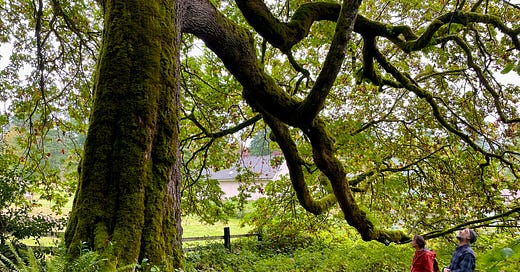



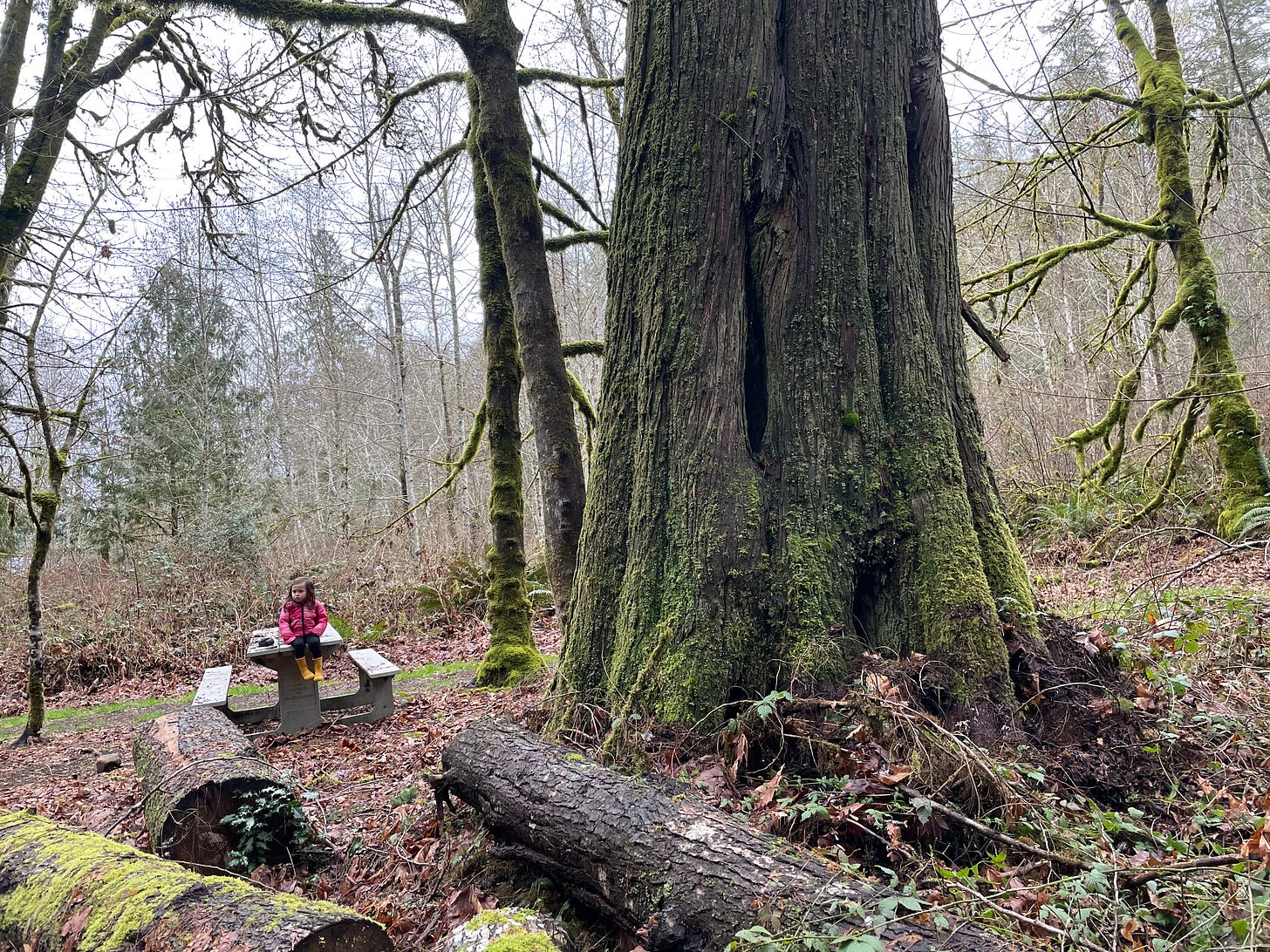
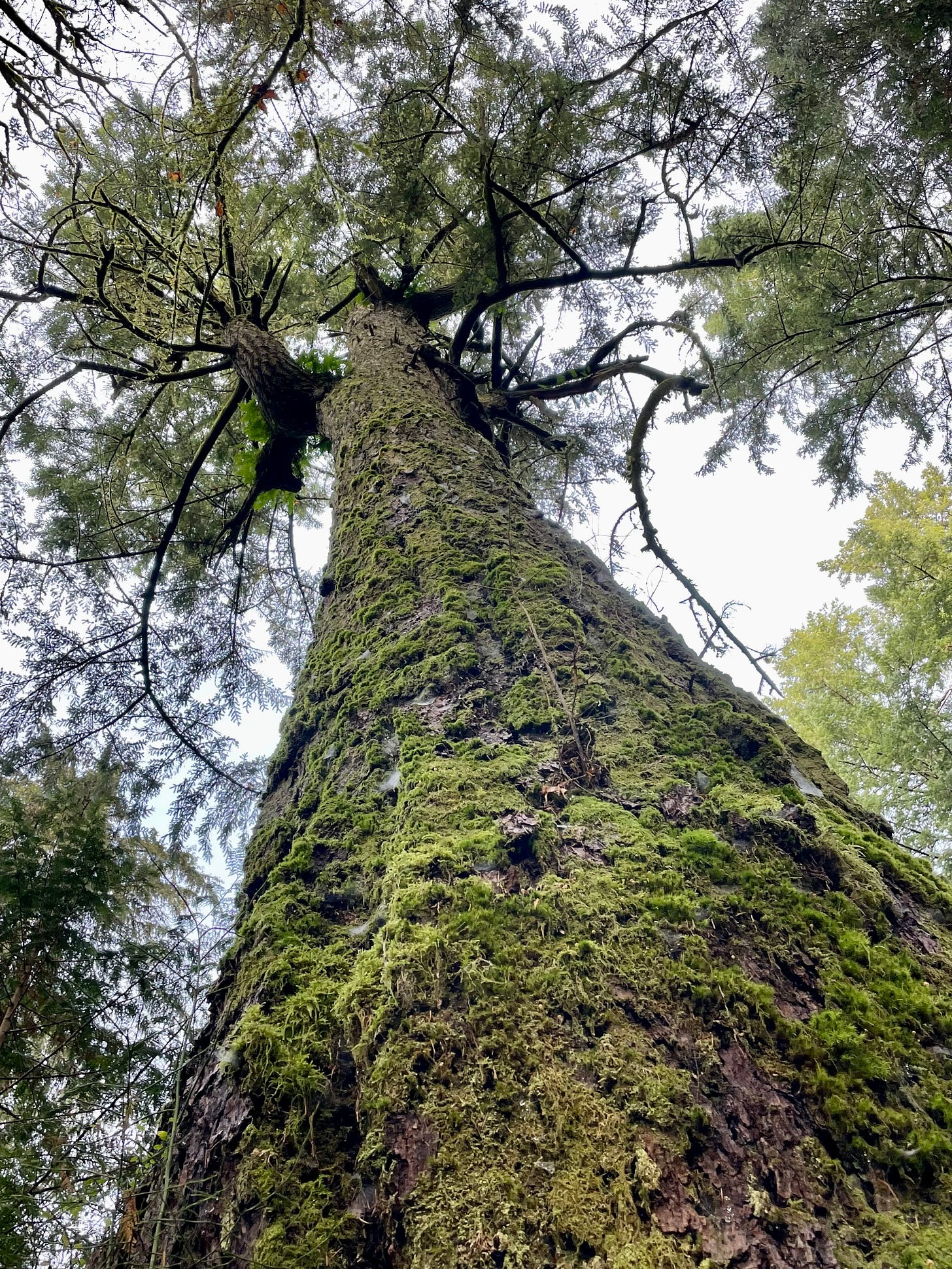
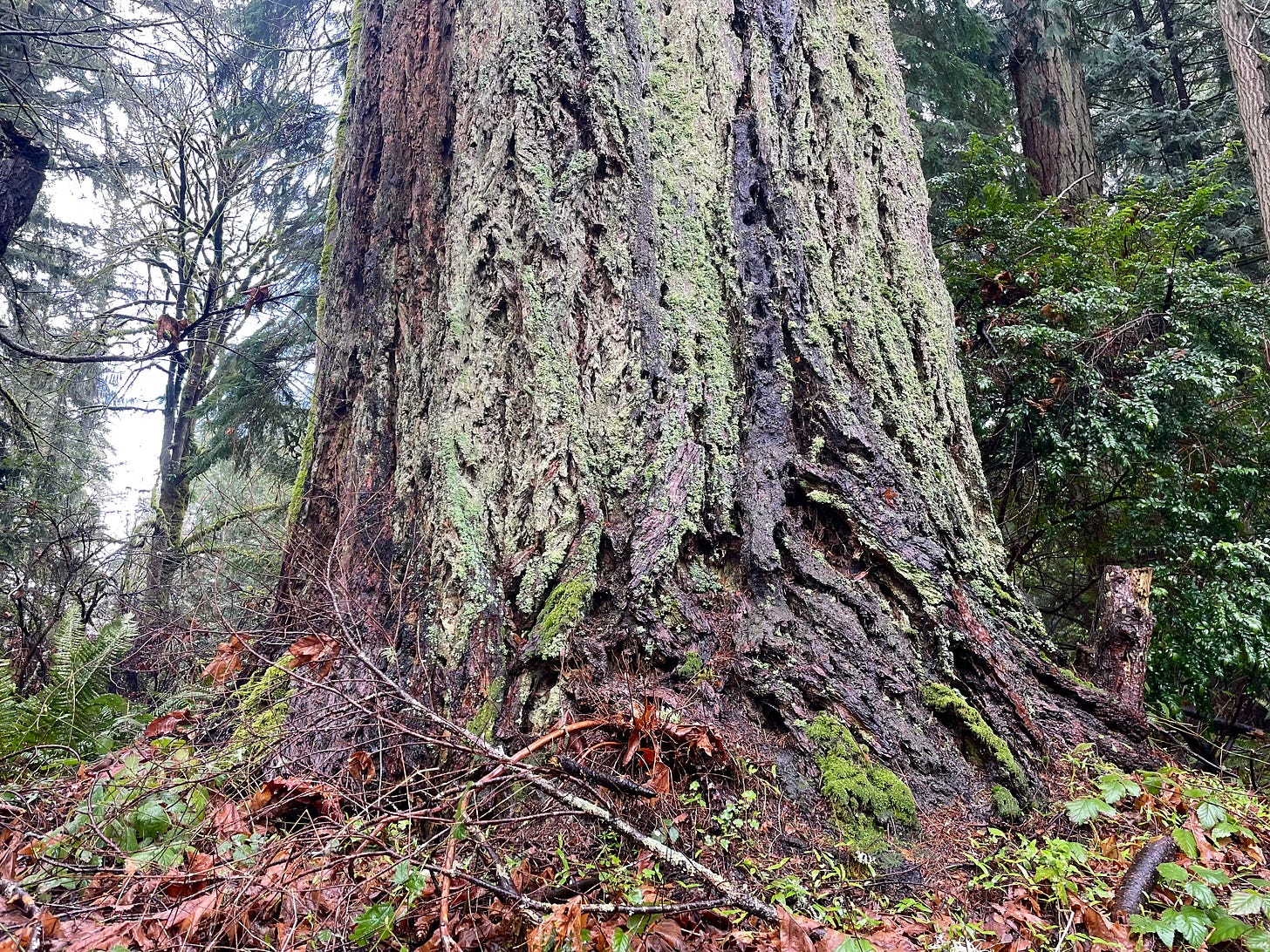
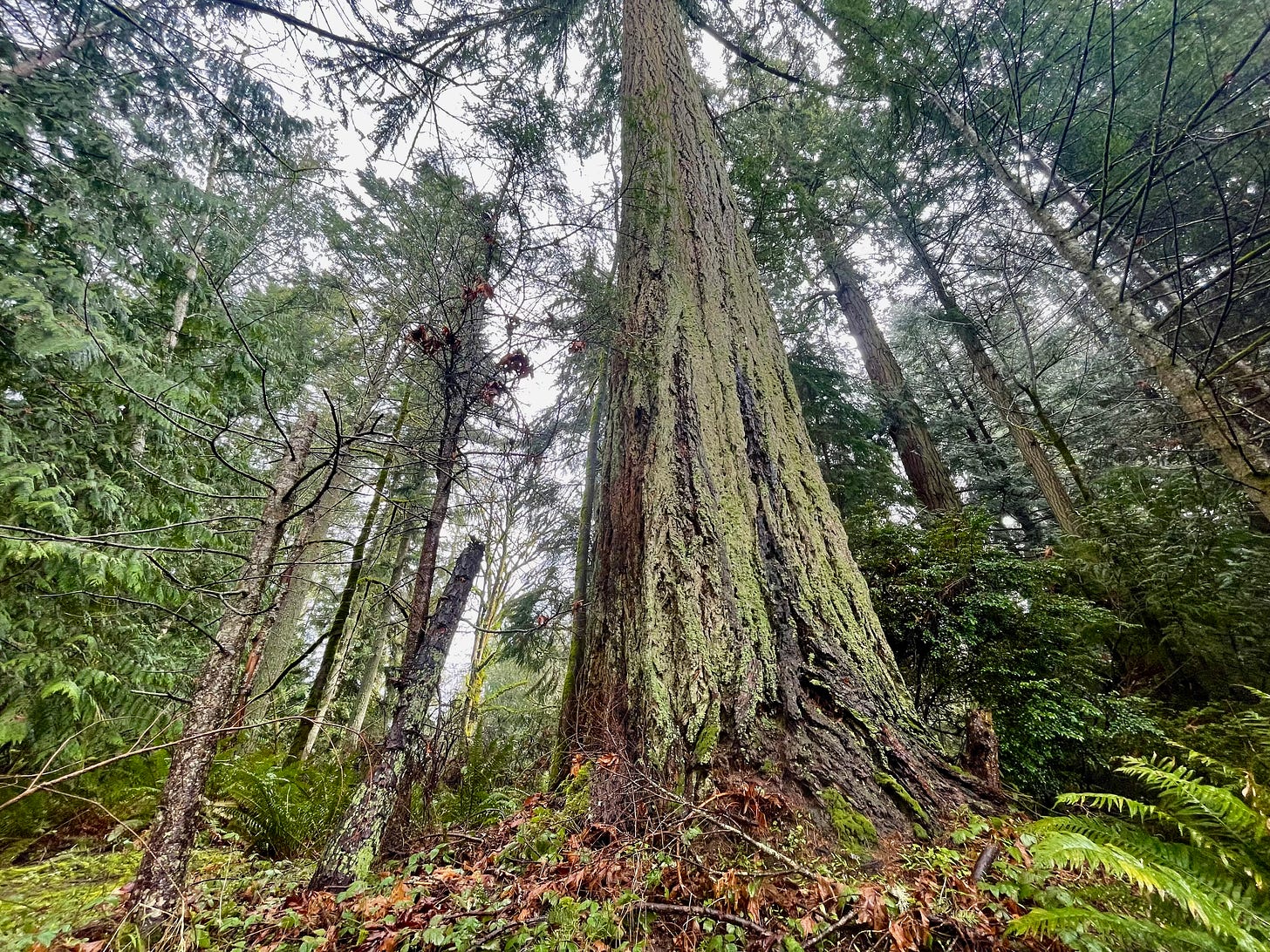
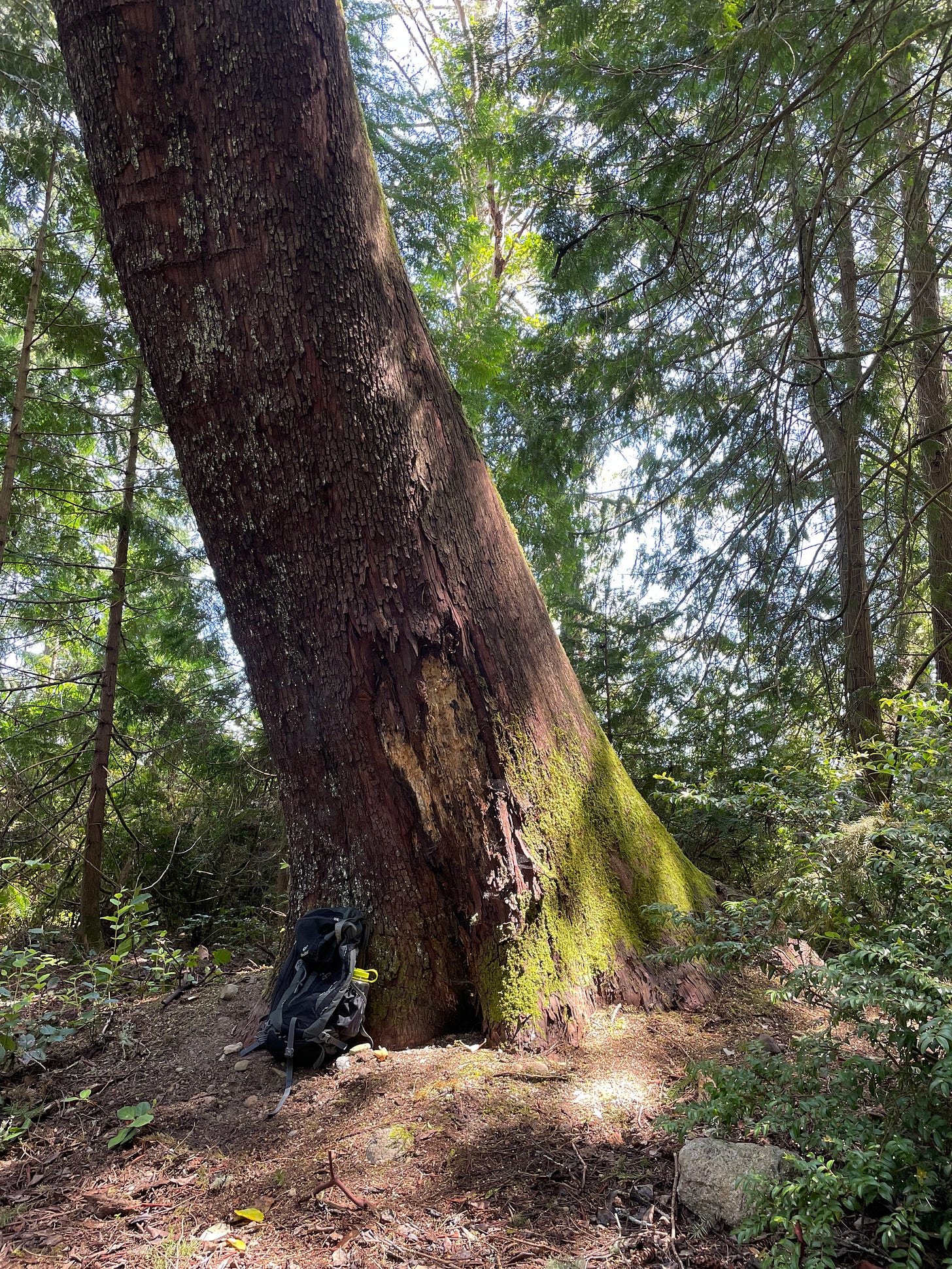
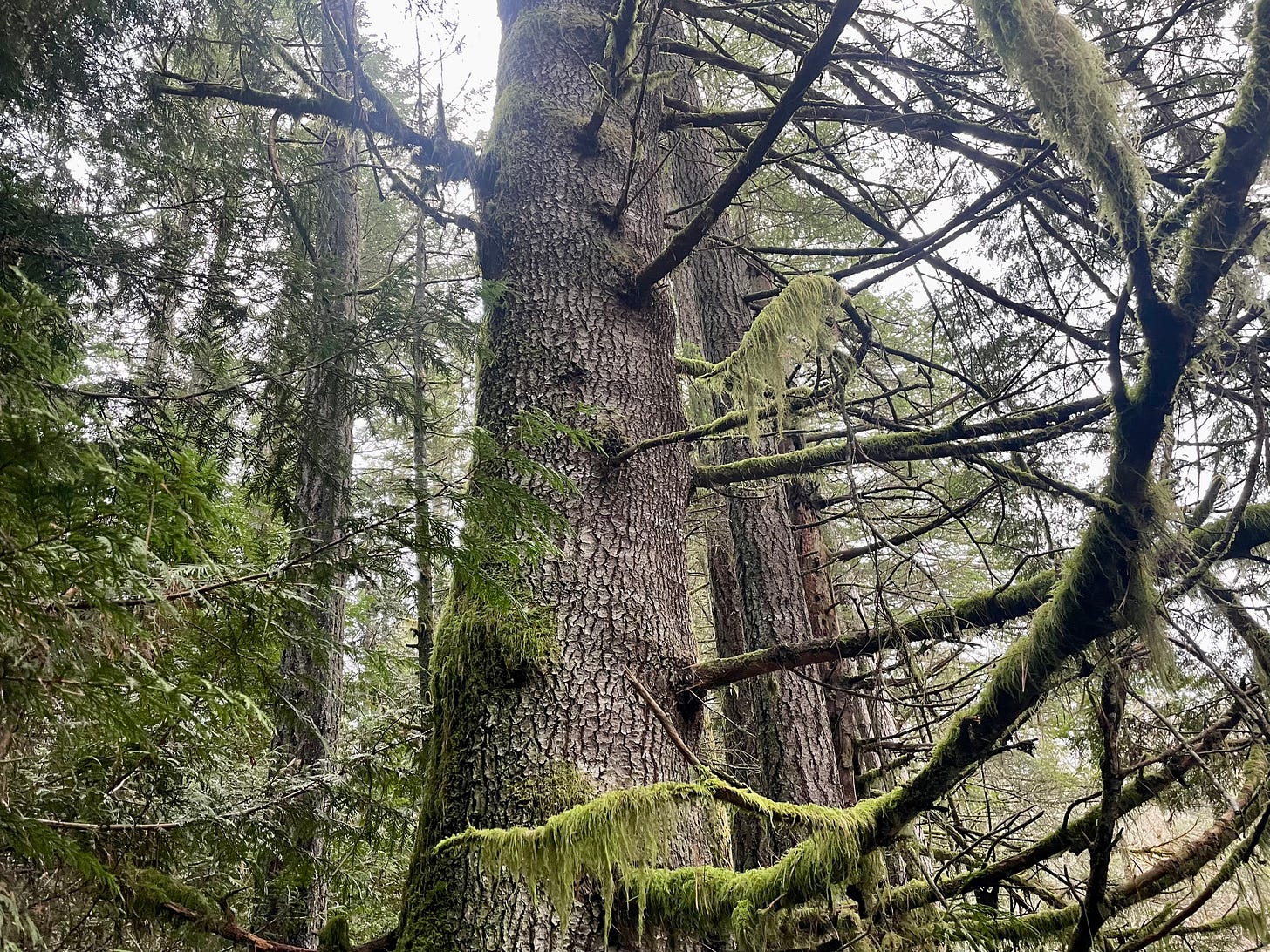
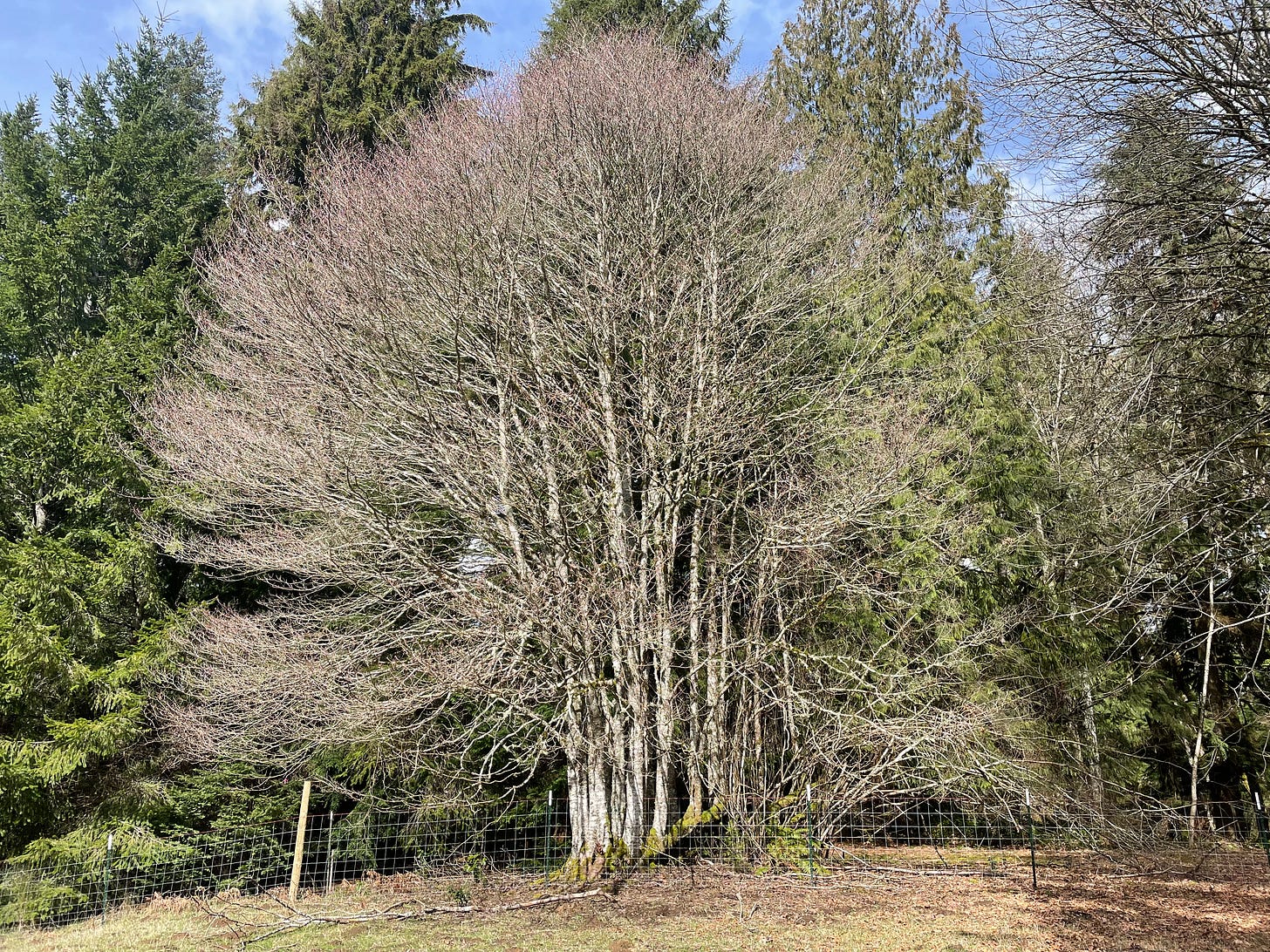
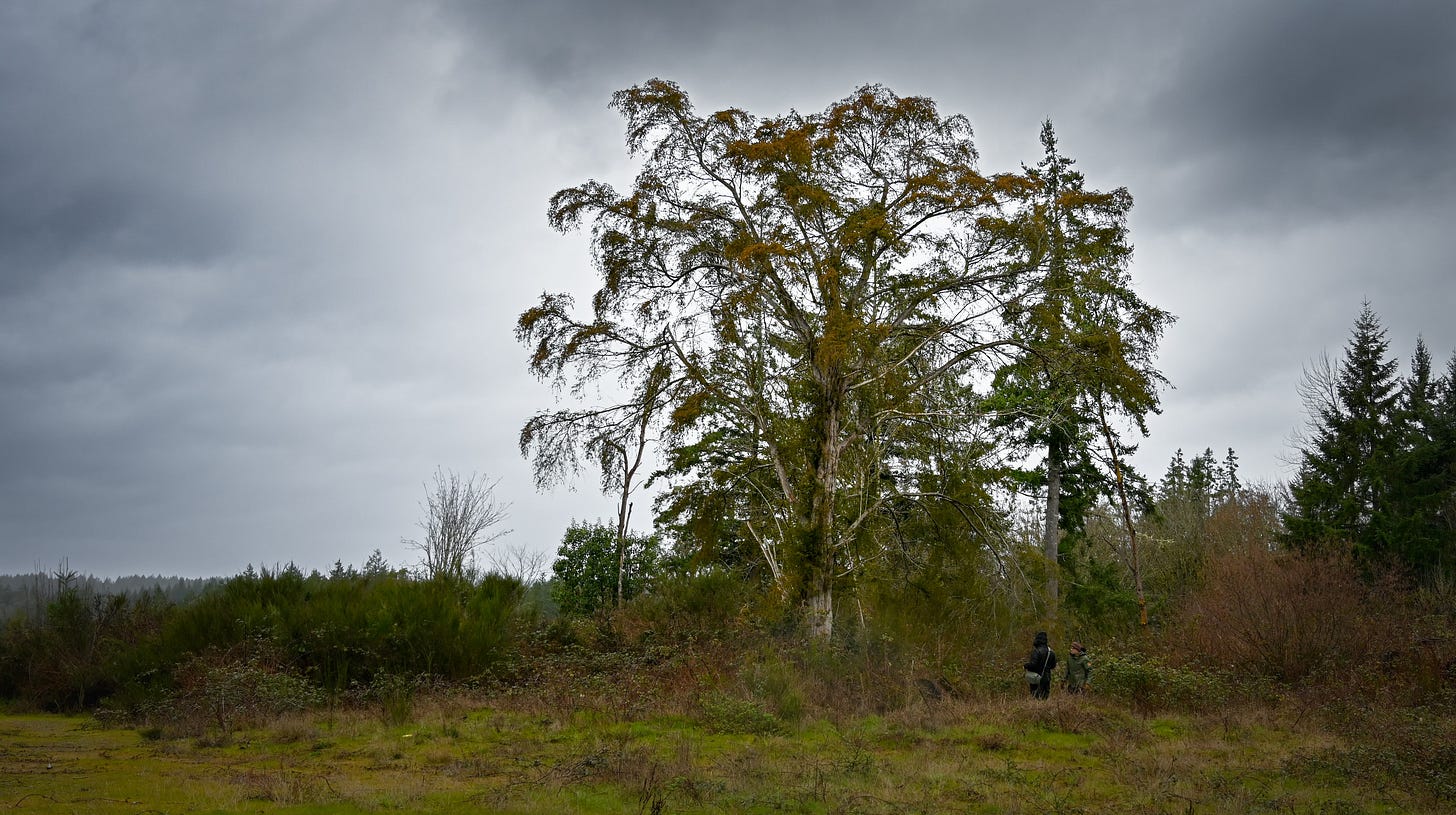
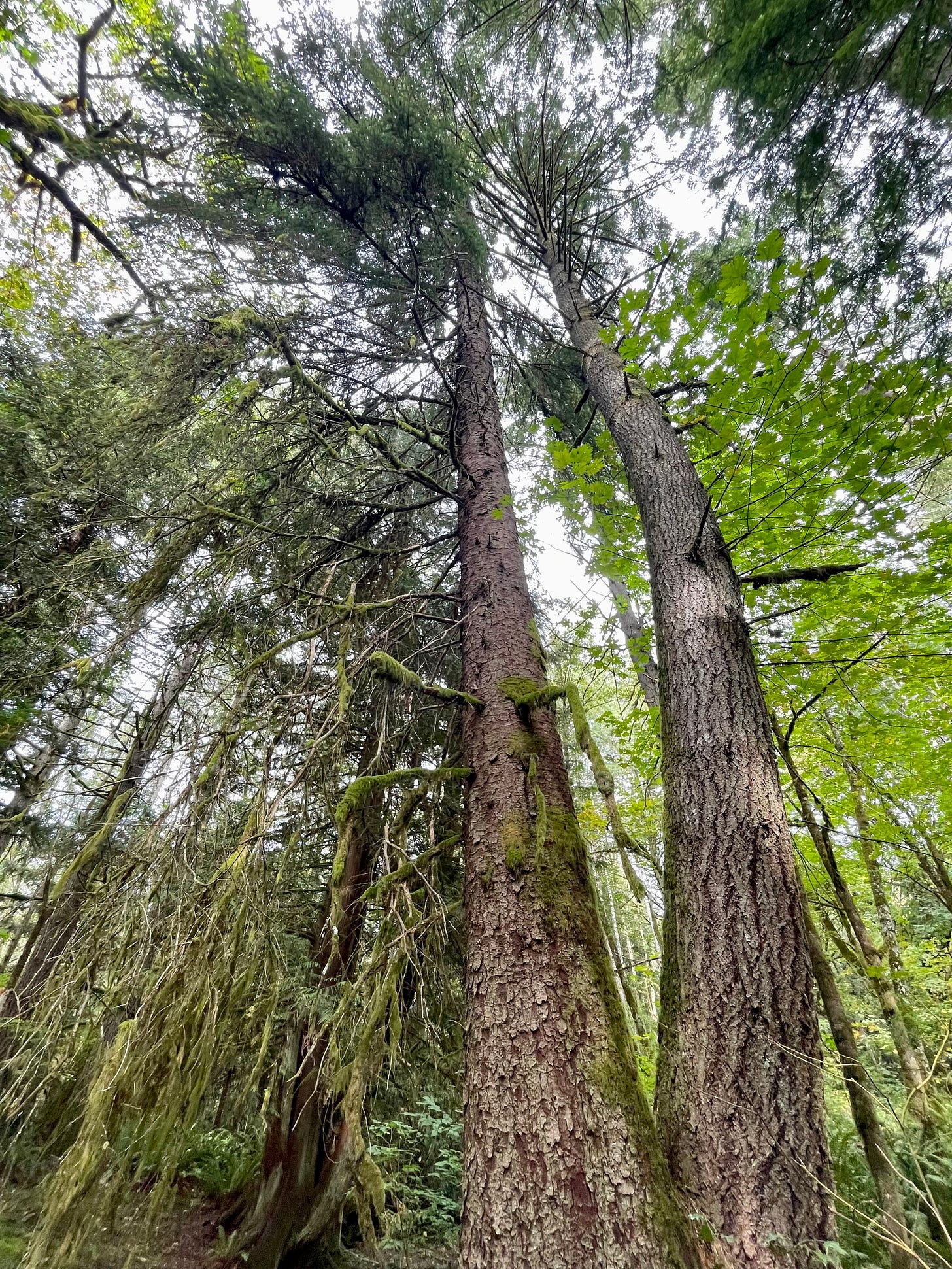
Chris, thanks for your shoutout and for your story/stories on the big trees. I am always amazed by how big trees are in our part of the world. We are quite blessed that they are here; they are wonderful testimonies to place, endurance, adaptation, and evolution.